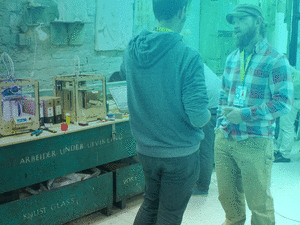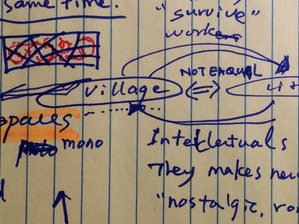Lisbeth Funck will defend her PhD thesis “Becoming with Architecture. Making the abstracted space through works and words” at AHO on April 4th. The defence will be in English.
Title of the trial lecture: How may “blackness” as a material and immaterial theme in contemporary architectural practice provide a pedagogical tool?
Trail lecture
Watch the trail lecture online.
Defense: 12.00.
Summary
Can spatial structure and material properties have capacity to radiate and intertwine in an architectural space? How can this radiant spatial entity be perceived and how can its accessibility be described? Can this space be understood as a material, an additional spatial layer to the built structure?
The PhD thesis “Becoming with Architecture” explores the circumstances that condition the sensual experience of architecture. The investigation is theoretically framed by phenomenological theories of architecture as well as philosophy in the field of new materialism, so-called object ontologies, and theories of becoming.
I argue that by recognising the autonomous space, by acknowledging the presence of structure, materials and things and that which radiates from them allows for becoming with the others, and thus provides the access to this radiant spatial entity. I have chosen to name this spatial entity “the abstracted space”, building on several understandings of the term ‘abstraction’. In brief, I understand that what is abstracted, in an architectural context, as the radiance of material, in other words, that which all material emits in the architectural space. The term ‘abstract’ is not understood as the immaterial as opposed to the material, but as another material; the space in which we all exist at the same time and the space that enables us to become one with architecture.
In addition to an essay discussing architectural theory, the research questions are investigated through the practice of making consisting of architectural photography, experimental model making, architectural drawings, and paintings related to the three case studies: Neue Nationalgalerie (1968), Berlin, by Ludwig Mies van der Rohe, 21st Century Museum of Contemporary Art (2004), Kanazawa, by Kazuyo Sejima+Ryue Nishizawa/ SANAA, and Casa del Fascio (1936), Como, by Giuseppe Terragni.
I have not strived to arrive at a conclusive definition but to bring to light the processual and performative nature of architecture, and how architects can perceive, describe, and engage with architecture. With the discussion on the concept of becoming with and the phenomenon of the abstracted space, my ambition has been to provide a way of thinking with architecture, which asks for higher awareness of the potential bestowed by this theory which ultimately can influence the way artists or architects plan, draw, imagine, construct, and assemblage architecture.
About the candidate
Lisbeth Funck is an Associate Professor at the Institute of Architecture at the Oslo School of Architecture and Design (AHO). She holds a Master’s Degree in Architecture from AHO and a Bachelor’s degree in Art History from the University of Oslo. She was part of the pedagogical pilot project B3´s teaching team from 2002 to 2016 when she established the master studio in architecture, Positions. The studio exercises a critical attitude towards architecture by introducing contemporary discussions that are argued and incorporated into architectural design. She conducted her doctoral research in parallel with her teaching.
Main supervisor: Anders Abraham
Co-supervisors: Ingrid Halland / Mari Lending
Adjunction committee:
First opponent: Professor Jessica Hemmings
Second opponent: Assistant Professor Dimitri Vangrunderbeek
Coordinator: Vice-Rector for research Lise Amy Hansen



